Design World recently spoke with Paul Michael, a research chemist for the Fluid Power Institute at the Milwaukee School of Engineering, and Mark Schmidt, Business Development Manager for Helgesen Industries of Hartford, Wis., on HydroNucleation reservoir technology.
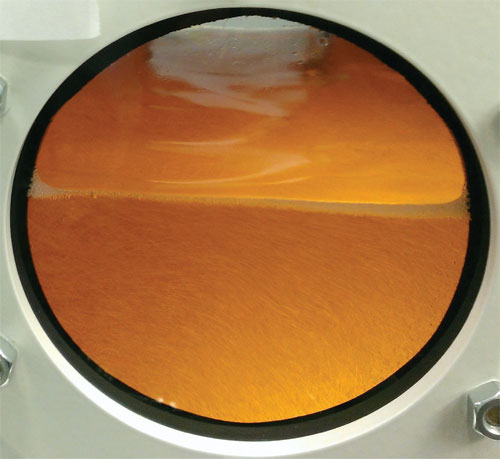
Aerated oil appears as entrained air bubbles below the surface of the oil. A small amount of foam is visible on the reservoir window. An oil with good antifoaming characteristics doesn’t necessarily resist air entrainment well.
DW: Can you tell us a little bit about HydroNucleation reservoir technology?
Schmidt: The purpose of our technology is to improve hydraulic system performance and reliability and to lower costs. It works by removing entrained air from liquids. This occurs by trapping microscopic air bubbles on imperfect surfaces, increasing bubble size during consolidation and also managing fluid flow, so the bubbles can rise to the surface. This was discovered by observing the perceived paradigm of tanks being oversized with a redundant amount of oil. Tier IV initiatives challenged us to make tanks much smaller.
DW: What advantages does this technology have?
Schmidt: The advantages and the benefits of our technology is that we can improve fuel consumption productivity. We can get more work done with the same amount of fuel, or the same amount of productivity can be done with lesser amounts of fuel. Another advantage is that we can use less engine power. We can achieve the same amount of work for that productivity, and there is the possibility to reduce engine size. Another advantage is Tier IV emissions. We can have less emissions, which is more green—and then also our customer can use it as a means for marketing. This would apply to the mobile equipment market.
DW: What kind of feedback have you received from people in the field thus far?
Schmidt: We’ve had feedback that there’s a reduced weight on the vehicle, a reduced oil cost and also a reduced space claim on the machines. Our customers are always looking for a means of reducing all three of these. The means of doing this is with lesser oil inside the reservoir, and that is because of our technology being able to remove air from the hydraulic system and making it much more efficient.
DW: Paul, can you tell us how MSOE got involved and then the results of your investigation on HydroNucleation technology?
Michael: Helgesen Industries contacted MSOE’s Fluid Power Institute in order to investigate the feasibility of the HydroNucleation technology. We received two reservoirs from Helgesen, one with a standard technology and another with the HydroNucleation technology incorporated. We ran a series of tests with the axial-piston pump and the HydroNucleation reservoir at different temperatures, speeds, pressures, and so on—and compared the efficiency of the pump with the two different reservoir technologies as well as the maximum flow rate and aeration levels of the reservoir.
We were interested in trying to understand—is there impact on the efficiency of the hydraulic pump when you use a reservoir that reduces the aeration level of a fluid through HydroNucleationtechnology? The results indicated that we saw approximately a 3% average reduction in the aeration level of the fluid with the HydroNucleation technology versus the standard technology and the same level or approximately 3% difference in the average volumetric efficiency. We found that there was a direct link between the aeration level of the oil and the volumetric efficiency of the axial-piston pump.
DW: What properties of the fluid affect aeration?
Michael: It’s pretty well known that density and viscosity will affect aeration, based on the idea that essentially in a more dense fluid with a greater differential, the density of air versus the oil will drive the air bubbles up to the surface quicker than a less dense fluid. Of course, the air bubbles also encounter the effects of viscosity, and viscosity impedes the process of the air bubbles flowing to the surface. Those are pretty good data points for understanding how air comes out of oil under static conditions. Once we go from a static condition to a dynamic situation, you see a difference in the factors that affect aeration levels.
DW: Why would this technology be of interest to hydraulic fluid manufacturers?
Michael: Hydraulic fluid manufacturers have developed different advanced technologies that can improve properties of the hydraulic system including efficiency and longevity as well as aeration. Often times, there’s interest in justifying or showing that there’s an impact on the aeration from the advanced technology as well as that it relates to the efficiency of the machine. The interest level really is—if you improve the aeration property of the fluid, does that impact the efficiency of the hydraulic machine?
Fluid Power Institute, MSOE
msoe.edu
Helgesen Industries
helgesen.com
Filed Under: Green engineering • renewable energy • sustainability, MOTION CONTROL

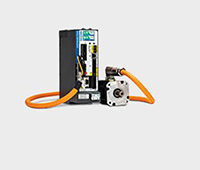
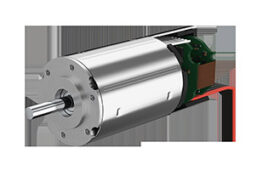
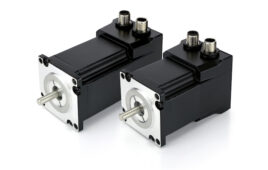
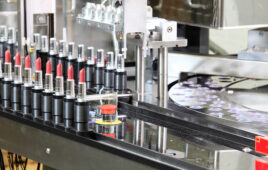
Can hydro nucleation strictly for use for hydraulic systems of could a same or similar technology be applied with less viscous fluids such as diesel fuel kerosene or even gasoline. It seems that if this were or has been applied elsewhere that automotive producers or even aircraft could benefit from removing air bubbles from fuel we would have heard more about this. I work this metal fabrication side of the industry but have worked with hydraulics as a service person on the repair side.
Thanks,
B. Lambert Mfg. Eng.